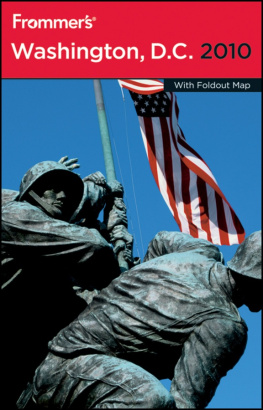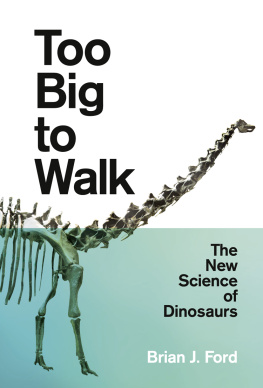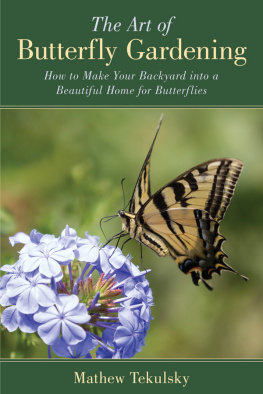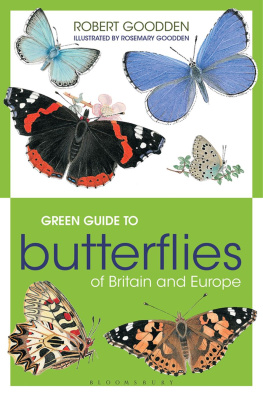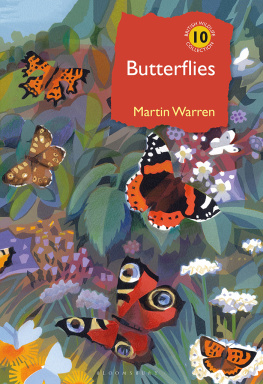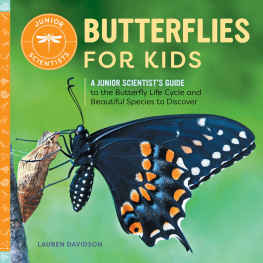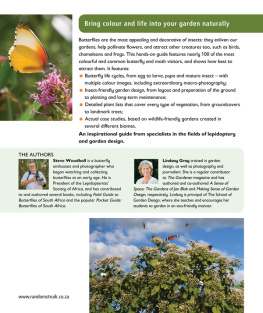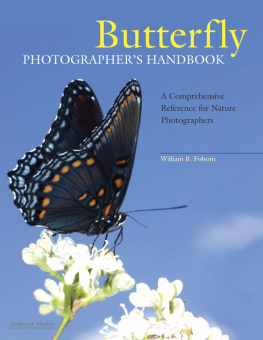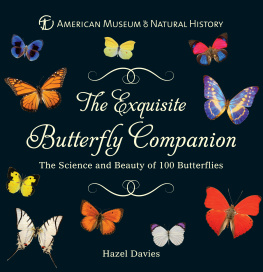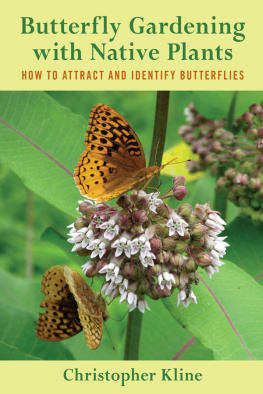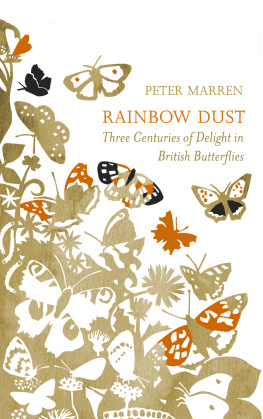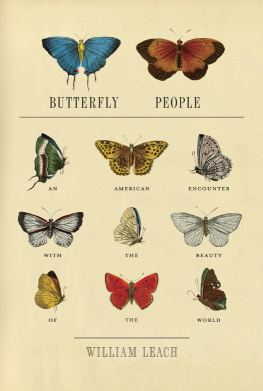JAMES FISHER M.A.
JOHN GILMOUR M.A.
JULIAN S. HUXLEY M.A. D.Sc. F.R.S.
L. DUDLEY STAMP B.A. D.Sc.
PHOTOGRAPHIC EDITOR:
ERIC HOSKING F.R.P.S.
The aim of this series is to interest the general reader in the wild life of Britain by recapturing the inquiring spirit of the old naturalist. The Editors believe that the natural pride of the British public in the native fauna and flora, to which must be added concern for their conservation, are best fostered by maintaining a high standard of accuracy combined with clarity of exposition in presenting the results of modern scientific research. The plants and animals are described in relation to their homes and habitats and are portrayed in the full beauty of their natural colours, by the latest methods of colour photography and reproduction.
TO THE MEMORY
OF MY FATHER
HAROLD DODSWORTH FORD
WITH WHOM
I COLLECTED BUTTERFLIES
FOR THIRTY YEARS
T HE AUTHOR of this book, we felt, had unique qualifications for writing the kind of work on British Butterflies that we wanted in the New Naturalist Series. Dr. Ford has been an enthusiastic butterfly collector since youth; he is not only a professional biologist of distinction but he has brought his wide general knowledge of genetics and evolution (he is Reader in Genetics at the University of Oxford) to bear on the problems arising out of his collecting. Thus, his recreation has also become part of his scientific career, and he has been able to see butterflies both as an absorbing hobby and as part of the great panorama of biology.
The resultant book is in our opinion an outstanding contribution to Natural History in the best sense of the word. Natural History is not something inferior to science; it is part of science, inviting an approach by way of field study. In regard to butterflies, the older naturalists were of necessity concerned with such aspects of biological science as identification, classification, localities, life-histories and habits; in this volume Dr. Ford shows how they can make their contribution in other biological fields, such as genetics, selection, evolution, population studies, ecology and behaviour.
Dr. Fords book contains a somewhat higher proportion of scientific theory and technical ideas than most books on Natural History; but we are certain that for the great majority of amateurs this will be a stimulus rather than an obstacle. In ornithology, the amateur birdwatcher has in the last ten or fifteen years become increasingly linked with the professional biologist, with fruitful results for both sides. We believe that Dr. Fords book may help to mark the beginning of a similar movement in entomology.
One of the distinctive features of the NEW NATURALIST series is its utilization wherever possible of the latest technique of colour photography. Readers of this book will, we are sure, agree that Mr. Beaufoy, in his colour photographs of living insects, has given the world a series of remarkable results, which in many cases have exceeded all reasonable expectations.
Another notable feature of the book is the series of distribution maps prepared by Dr. Ford. So far as we are aware, nothing so effective has previously appeared for any group of British animals.
THE EDITORS
THERE are many books on British butterflies but none on their general biology. A few authors have indeed summarized certain aspects of recent research upon insects as a whole, yet it remains true that no book exists which treats of the varied phenomena to be encountered in studying the butterflies of our islands, nor is there one which uses them as a theme upon which to base discussions of the many remarkable problems which they present. This gap in the literature I have now attempted to fill.
It has always appeared to me that evolution is the key-note of biological study and research; consequently, while as far as possible avoiding over-emphasis, I have allowed that point of view somewhat to influence the construction of this book. Taking a variety of problems, relating to structure, the senses, classification, habits, distribution, means of dispersal, and genetics, I have, as it were, adjusted them so as to converge upon the last three chapters which are all concerned, directly or indirectly, with evolution. Furthermore, deeply impressed as I am with the importance of the past in interpreting the present, the historical setting of a subject has a value which, so it seems to me, is sometimes under-estimated, at least in science. Thus I have begun this book with a recent history, that of British butterfly collecting, and ended it with a remote one, that of the origin of our butterfly fauna; a subject which it only becomes possible to discuss after building up biological arguments and data throughout the intervening chapters.
I wish to draw attention to certain other features of this work. There are numbers of excellent books describing the adult and early stages of British butterflies, and giving lists of their times of appearance, food-plants, and localities. It has not been my intention to add to these, for to supply such information yet again would be totally unnecessary and a disastrous waste of valuable space. In the Bibliography I have, however, indicated suitable works of reference where such information can be obtained. Moreover, I have arranged that every species shall be figured in colour in this book, where each illustrates some general principle, so that their identification from the Plates in it should present no great difficulty. Indeed it may fairly be claimed that the illustrations are on a scale never before attempted in this subject. They make it possible to contrast specimens of many species from different parts of Britain, and these provide examples of geographical races and sub-species. Varieties of genetic interest, and the results of temperature experiments, are also shown; while the chapter on the history of collecting is illustrated with a set of famous specimens, each of which has been known by repute to generations of collectors, though few may have had the opportunity of seeing them. All of these Plates are in colour and, in addition, the colour-photographs of living specimens in surroundings natural to them are a novel, and I hope valuable, feature. These have been specially taken for this book by Mr. S. Beaufoy, and I believe they will be judged a remarkable achievement.
The black-and-white Plates are also upon entirely new lines. They show the early stages of all the principal families, and of many smaller groups, indicating distinctions used in classification; also the process of pupation and emergence from the chrysalis. Furthermore, they include illustrations of a selection of protective devices and habits, and photomicrographs of the eye and of the developing wings during the larval and pupal periods. I have, in addition, reproduced photographs of typical and famous localitites. Those who have never had the opportunity of visiting Wicken Fen or Lulworth Cove, or of seeing the haunt of the Large Blue or the Mountain Ringlet, will probably be interested in the pictures of these, and of some other, celebrated habitats.
I have written this book in the hope that it may be useful to scientific entomologists and biologists in general but, in addition, I have especially kept before my mind the needs of butterfly collectors and of all those who love the country. Perhaps it may increase their pleasure by widening the scope of their interests. Many would, no doubt, wish to go no further than this, for there must be a large number of collectors and naturalists who have no intention of becoming amateur scientists. Indeed I should not wish all of them to do so; but I hope that some of them may, for they would add to their enjoyment. Accordingly, I have pointed out numerous interesting lines of experiment and observation which could be undertaken by anyone using the simplest means. Nevertheless, if successfully carried out, the information so obtained would be of genuine scientific value.



